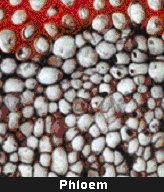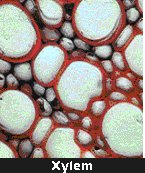Home Page
Meetings:
Minutes (pdf file)
Treasurer's Report (pdf file)
Agenda (pdf file)
Administration:
District Officers
By-laws &
Standing Rules
Protocols
Award Honorees
Conferences
History
Local Societies
Society Update Form
Personal Update Form
Logos
Newsletter (pdf file)
Public Gardens
Consulting Rosarians:
Consulting Rosarians
Annual Report Form
CR Status
Master Rosarian Form (pdf file)
How to become a Consulting Rosarian
Judges:
District Judges
Hort. Judges' Report Form
Arr. Judges' Report Form
Hort. Judge's Status
Arr. Judge's Status
Rose Shows:
District Trophies & Winners
Rose Show Results
Rose Culture:
District Roses in Review
Award of Merit Articles
District Rose Culture
Best Roses for the District
Misc:
Other Interesting Sites
Text Site Map
Award of Merit Winner
by JOLENE ADAMS
NCNH District Director, Judge, Consulting Rosarian
This is pruning season – and everyone is looking at rose stems. But you need to know how important the stems of the plant really are!
Stems support buds and leaves and serve as the pipeline for carrying water, minerals, and food.
We need to speak the same language when we talk to each other about stems. This is how stems are explained in a classroom:
Twig - A young stem (1 year old or less) that is in the dormant winter stage (has no leaves).
Cane - A stem that is more than 1 year old, typically with lateral stems radiating from it.
Lateral - A stem growing from the main cane.
Cells are the basic structural and physiological units of plants. Most of a plant’s reactions occur at the cellular level. Stems contain plant tissues (meristems, xylem, phloem, etc.) that are large, organized groups of similar cells that work together to perform a specific function – in this case the transport system.
The vascular system inside the stem forms a continuous pathway from the root, through the stem, and finally to the leaves. It is through this system that water and food products move.
Cambium
Cambium is the layer of actively dividing cells just beneath the skin of the cane. Cambium cells divide to form ‘transportation’ tissue. This layer is seldom more than 10 cells thick, usually averaging 5 cells. It gets damaged by rubbing or accidental nicks.
Phloem
This is the system of tubules that allows nutrients to flow from the root area to the growing tips of the stems and leaves. Without a healthy phloem, you wouldn’t have a rose. All the food that the roots accumulate flows up through the phloem and into the rest of the plant.

Xylem
A bit further into the stem, you find the xylem. This tissue is the principal water
transport system for the rose. Water and anything that is dissolved in it moves up and down through the tissues of the xylem.

The most actively growing part of the stem is the very tip – it is the meristem. This tip is the only part of a stem (or rootlet) that grows. And it does it by cells dividing and then the next layer dividing and then the next layer dividing, etc. If the meristem is damaged or cut off, the stem cannot grow any longer.
Last updated: 3/7/09
©NCNH District
All Rights Reserved
Webmaster: gailtrimble@ncnhdistrict.org